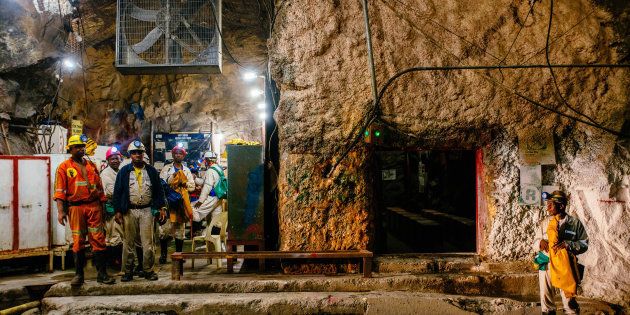
After two years in the making, the new Mining Charter was unilaterally released by the highly compromised Minister Zwane on Thursday. By the times the markets closed for the long weekend, mining companies associated with SA had lost about R50 billion in market cap. This is probably about as much as the new charter was trying to transfer from existing shareholders to new black shareholders.
This, however, was not a demonstration of an efficient market. This was the first reaction to this fickle and agnostic thing called capital. Other stakeholders reacted differently, some believe this is overdue or not radical enough, but mostly, the providers of the capital the industry needs so desperately, are voting with their feet. A simple financial evaluation of the cost (there are no easily identifiable financial benefits) of Charter 3, would indicate that the impact of this Radical re-allocation of the benefits of this cornerstone industry is going to be radical, perhaps even catastrophic.
As there is agreement amongst all stakeholders about the need for an inclusive economy with a just and fair distribution of the benefits coming from it (especially in the case of a national asset like our mineral wealth that belongs to all the people of the country) let's take a moment to ponder the cost of this radical intervention. Let's ask ourselves whether this is smart, value for money or just an attempt to enrich a few at the expense of the average citizen of the country.
During my time as the CEO of a gold mining company, I spent many hours explaining to employees at all levels of the mining industry that a business's valuation (or share price) is just what somebody is prepared to pay today for future profits. Like it or not, we don't get to make the rules. Capital flows to where people think they can make the best returns.
This Charter hurts the value proposition of mines at both the revenue and the cost lines. A new 1 percent revenue royalty is proposed to be added to 2 percent to be re-directed from existing levies towards a very inefficient new state agency to control 'shares' on behalf of communities. As these shares will not be tradable, they will have zero capital value for the supposed shareholders and yet they will cost a lot, both for existing shareholders as well as the country. Companies already pay revenue royalties, so what is the fuss about an additional 1 percent? In my simplified valuation argument of earlier, if the SA Gold and Platinum industry combined have got a nett profit margin of 5 percent, this new royalty has just destroyed 20 percent of the value of these industries.
In all commodities, the companies are price takers and an increase in costs can't be passed on to the customers. One could argue that over time such interventions will result in spreading the cost to society at large through a weakening Rand, etc. In the absence of an understanding of basic economic principles, it is easy to try and solve many societal problems and needs through passing the responsibility and costs onto the mining industry. Let's acknowledge that this is in the context of an unequal and exploitative past which leaves us today with a huge trust deficit between stakeholders. It is imperative, though, that we consider the cost impact of our policy and regulatory interventions.
This intervention is indeed radical and from a simple cost-benefit analysis clearly value destructive for society and specifically for the providers of capital.
As the DMR hasn't done a cost analysis of the new Charter, one can only guess what the incremental impact of the radical and prescriptive measures will be. The laundry list of new costs for mining companies include the most demanding and aggressive targets for procurement, supplier and enterprise development as well as totally unrealistic targets for affirmative action (regardless of how much money is thrown at it). In both these instances, the new Charter is truly radical and requires more from the mines than even what is expected from the government and SOEs. But there is more! More needs to be spent on mining communities, housing and living conditions, beneficiation, etc, etc.
When fund managers and analysts sit down to calculate the costs, they will have to make assumptions and look at what has happened on the mines with regards to costs and productivity over the last 15 years. I suspect the assumed cost increases are going to range between 5 and 10 percent, but time will tell. It is not hard to see how such assumptions will wipe out any expected future profit margin, which means that in my simple value proposal, these companies will now be worthless and certainly uninvestable!
Of course, the world is dynamic, the Rand may weaken dramatically, the mining companies will respond by cutting capex (that is investing in their own futures) and cost reductions and retrenchments will negatively affect the very employees, communities and suppliers that were meant to be benefited by this radical intervention.
There are many other perspectives and considerations around the issue of how to slice the cake we are baking with this national endowment of ours, but this intervention is indeed radical and from a simple cost-benefit analysis clearly value destructive for society and specifically for the providers of capital.
So why do it? Who stands to benefit? Can we really afford to threaten the existence of the mining industry, destroy the remaining 500,000 jobs and create more disillusionment when the promised riches never materialise for employees or communities?
You decide.
